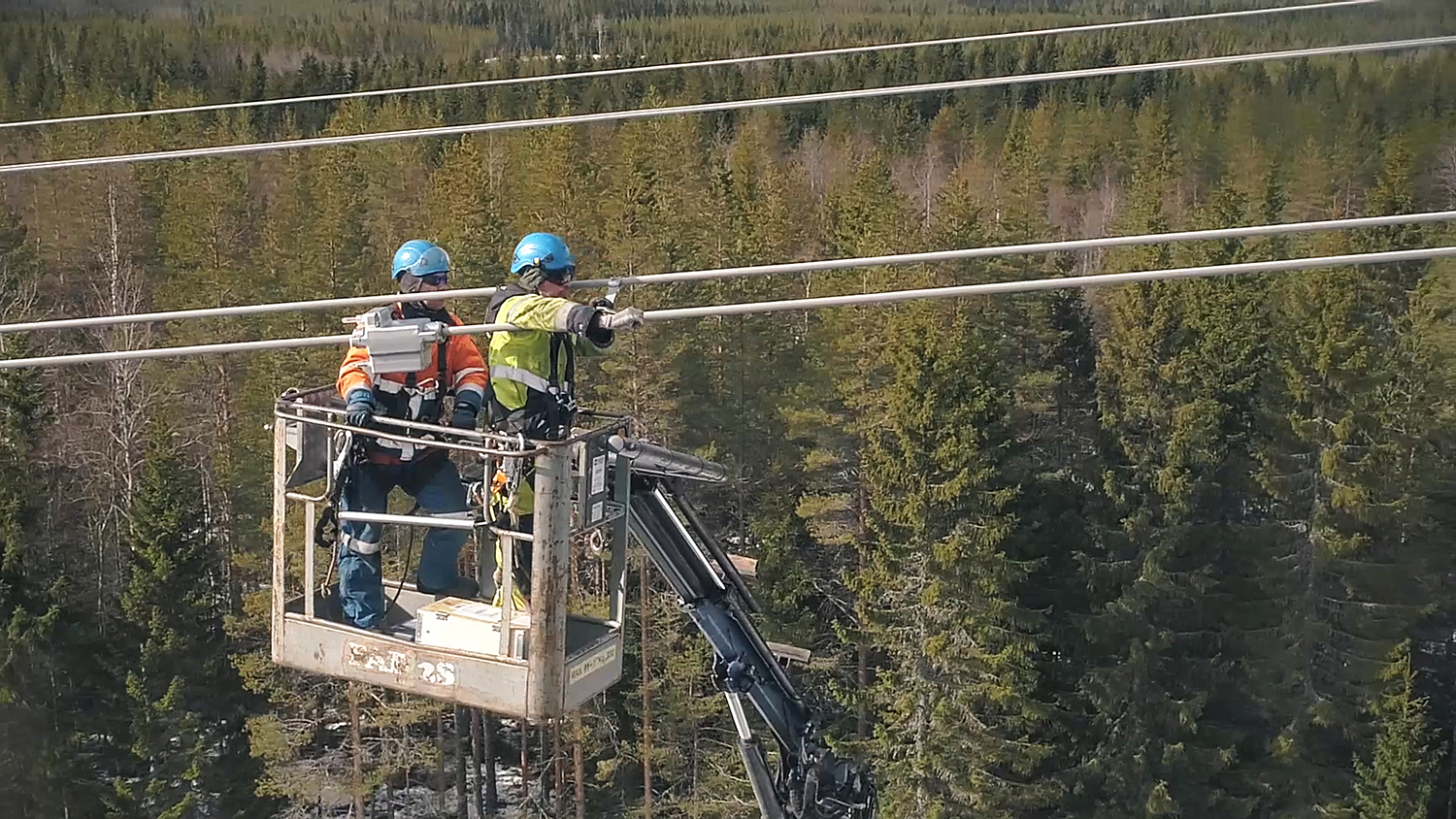Some of the transmission lines on the main grid handle heavier loads than others. For example, Fingrid’s 400-kilovolt Isokangas–Pyhänselkä transmission line in the Oulu region has some of the highest loading. The line carries the electricity generated by hydro power and wind power in northern Finland and northern Sweden to the south, where consumption is highest.

Last year, Fingrid began studying various dynamic line rating technologies and finding out how other companies have fared with them. Dynamic Line Rating (DLR) refers to the dynamic loading of transmission lines depending on the prevailing weather conditions, such as temperature and wind. The DLR device measures the loads handled by the line in real time in different weather conditions. When this is combined with a weather service, it becomes possible to forecast the load in the coming hours and days.
The goal of measurement is to increase the available transmission capacity in the places where lines are heating up, causing them to sag and restrict transmission capacity. Similarly, Fingrid aims to make use of the significant cooling of transmission lines in windy conditions when it determines the transmission capacity.
“The experiences accrued by other operators around the world indicate that DLR is an excellent solution for realising the transmission capacity required to connect wind power to the grid. The capacity required to transmit the regional surplus of electricity arising from wind power generation is greatest when the wind is strongest,” says Antti Harjula, Fingrid’s Planning Manager.


“We expect DLR systems to provide an average of more than 10 per cent extra thermal transmission capacity compared with load capacities based purely on seasons. This will enable us to serve electricity markets more cost-effectively,” he continues.
This year, Fingrid is testing three different DLR systems on its 400-kilovolt transmission grid.
In the attached video, Antti Harjula describes the DLR system, and Project Manager Jukka Turunen demonstrates the installation of sensors for DLR systems on the Isokangas–Pyhänselkä line. The installation was carried out in April 2020, and four different sensors were installed on sections that are considered critical in terms of thermal loading. The installation went well, and the line was restored to operation after an outage of about two hours.









